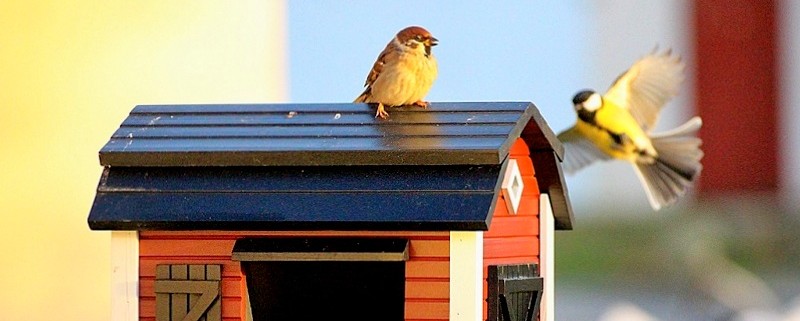Bird Feeding 101: Getting Started
Cary, NC — How can we attract birds to our homes this winter? This is easily accomplished and fairly inexpensive to do, but there are still some matters to consider when bird feeding.
Bird Feeding 101
It is estimated that more than 52 million Americans feed birds around their homes – and the biggest season for this is in the winter. Winter is not as stressful on birds as we imagine, because they are well-adapted to the food choices available in colder months (including berries, seeds and insects). However, we humans enjoy seeing the colorful and interesting birds in these bleak months, so it’s natural to lure them in with supplemental food offerings.
Getting Started
These five tips can help beginning and long-time bird feeders successfully attract birds to their yards in the winter.
Two basic food choices can attract a wide variety of birds. I recommend beginners put out two food choices – black oil sunflower seed and suet. At my home, I have attracted over 25 species with these two products alone. Black oil sunflower is rich in nutrients and easy to intake by Northern Cardinals, Mourning Doves, Carolina Chickadees, Tufted Titmice and many others. Suet is a fat and protein source favored by most woodpeckers, Carolina Wrens, Yellow Rumped Warblers, White Breasted Nuthatches, Eastern Bluebirds and quite a few other species.
Put bird foods in the right place. Consider housing seed and suet in appropriate feeders. A basic “tube” feeder will do for sunflower seed, and a wire basket does well for suet. Some people will throw seed on the ground, but the reality is that squirrels will likely eat seed there well before the birds find it. When buying feeders, a very important consideration is how easy it is to clean the feeder. Unclean feeders lead to mold and disease.
Hang feeders far enough away from trees and shrubs to make access difficult to squirrels and other predators but close enough to give birds emergency shelter from hawks. Something four feet or more away from trees should work well.

A word on “squirrel proof” feeders – I have not found there to be any. Squirrels can be discouraged to some degree, but these pesky creatures have time to explore ways to beat the system and usually do. My best strategy is to choose feeders circled by a steel cage and to hang feeders from posts protected by a guard.
Be patient when waiting for your first visitors. Birds depend on a “mental map” of food resources during the difficult months and make regular visits to the reliable locations. A new source, like your feeders, will eventually be added to the list, but it could take days or weeks before you see much bird traffic.
Don’t forget water! The value of a home feeder station increases in the minds of birds if water is also available. Water is critical to the birds in winter for both digestion and cleanliness. Consider adding a bird bath either at ground level or on a pedestal. In the coldest weather, the homeowner can either tip out ice or add an expensive deicer.

Enjoy the results. Once birds begin regular visits to your feeders, you will enjoy observing the very interesting behavior of different birds, the wide variety of species in our area and the comfort of seeing colorful guests on a cold day.
You may find this hobby will grow on you!
Related Content
- Attract Birds to Your Backyard: Here’s How
- Meet the Backyard Winter Birds of Cary
- Great Blue Herons – See Them in Cary
- Bald Eagles – See Them in Cary
- Make Your Yard a Wildlife Oasis
Story by David Lindquist. Photos by Susanne Nilsson and Leroy Anderson.
CaryCitizen is sponsored in part by Garden Supply Company on Old Apex Road in Cary.




http://www.rollerfeeder.com/ products have been in use here for years…squirrels (and once a fat raccoon) go flying!
And, this has kept the squirrels away from the suet cakes for sure:
http://www.farmandfleet.com/products/643079-stokes-select-squirrel-proof-double-suet-feeder.html